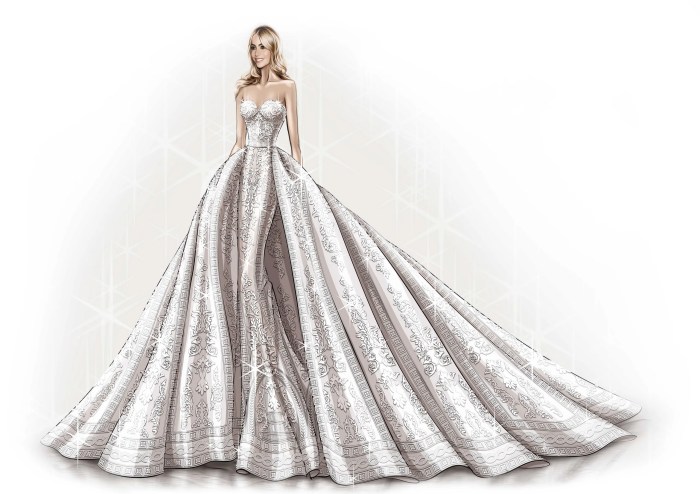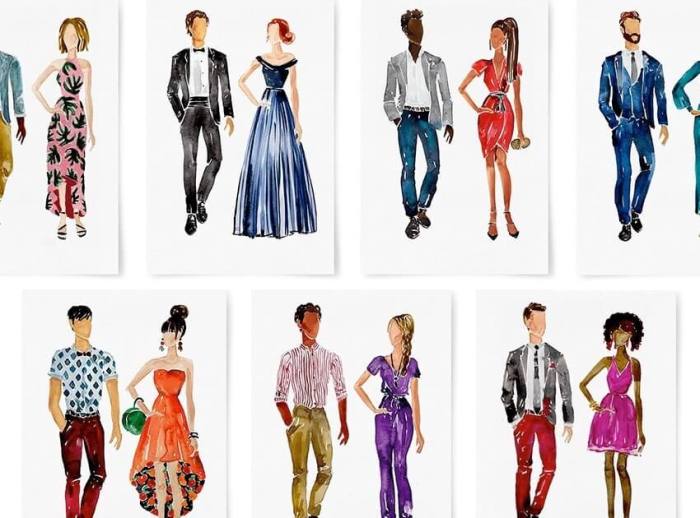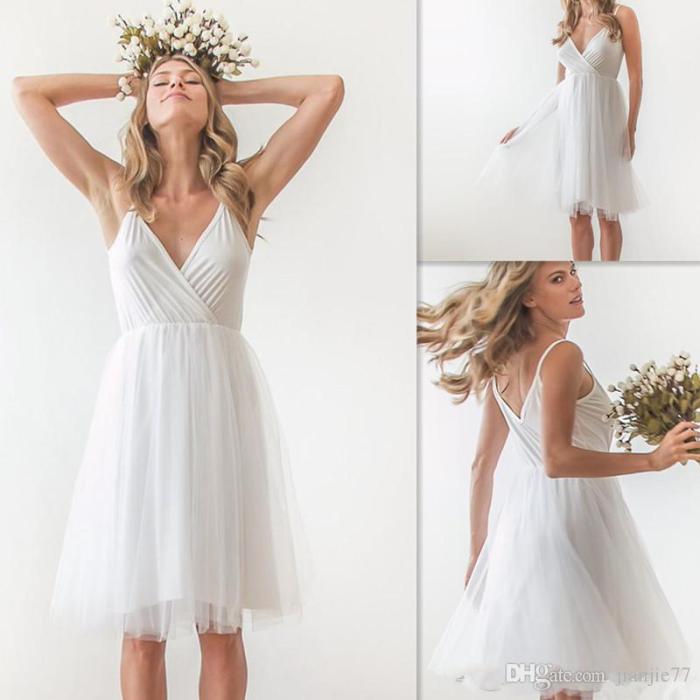Fabric Selection for a Wedding Dress
How do you make a wedding dress – Choosing the right fabric is paramount in creating a wedding dress that not only looks stunning but also feels comfortable and drapes beautifully. The choice depends heavily on the style, season, and personal preference of the bride. Consider factors like drape, texture, cost, and suitability for various styles when making your selection.
Fabric Comparison
The following table compares several popular wedding dress fabrics:
| Fabric | Drape | Texture | Cost | Suitability |
|---|---|---|---|---|
| Silk | Excellent, flows beautifully | Luxurious, smooth | High | Classic styles, A-line, sheath |
| Satin | Good, smooth drape | Shiny, sleek | Medium-High | Ballgowns, mermaid, fit-and-flare |
| Lace | Depends on type, can be stiff or soft | Delicate, intricate | Medium-High | Bohemian, romantic, vintage styles |
| Tulle | Stiff, holds shape well | Lightweight, sheer | Low-Medium | Ballgowns, layered skirts |
| Organza | Stiff, holds shape well | Lightweight, sheer, crisp | Medium | Romantic styles, overlays |
| Crepe | Good, drapes softly | Slightly textured, matte | Medium | Sheath, A-line, modern styles |
Sustainable and Ethical Fabrics
Using sustainable and ethically sourced fabrics offers several advantages. It minimizes environmental impact by reducing water and energy consumption during production. Furthermore, it supports fair labor practices, ensuring workers receive fair wages and work in safe conditions. Examples include organic cotton, recycled materials, and fabrics certified by organizations like GOTS (Global Organic Textile Standard).
However, sustainable fabrics can sometimes be more expensive and may have limited availability. Careful research and sourcing are crucial to ensure both quality and ethical practices.
Determining Fabric Quantity
Calculating the required fabric quantity involves considering the dress design, size, and fabric width. Accurate measurements are essential. Pattern pieces should be laid out efficiently to minimize waste. Adding extra fabric for adjustments and potential errors is always recommended.
Wedding Dress Design & Pattern Making
Creating a wedding dress pattern requires precision and attention to detail. Accurate measurements are the foundation of a well-fitting garment. Understanding different dress silhouettes is key to choosing the right style for the bride.
Creating a Basic Wedding Dress Pattern
A basic wedding dress pattern can be created using the bride’s measurements. This involves drafting individual pattern pieces for the bodice, skirt, and sleeves. Several methods exist, including using slopers (basic pattern blocks) or drafting directly from measurements. Resources like books and online tutorials offer detailed guidance on this process. Accurate measurements are paramount to achieving a good fit.
Common Wedding Dress Silhouettes
- A-line: Fitted at the shoulders, gradually widening to the hem, flattering on most body types.
- Ballgown: Fitted bodice with a full, voluminous skirt, creating a fairytale look.
- Mermaid: Fitted through the hips and flares out below the knees, emphasizing curves.
- Sheath: Straight, close-fitting silhouette, elegant and modern.
- Empire Waist: Fitted bodice just below the bust, flowing skirt, creates a lengthening effect.
Wedding Dress Sketch Designs
Here are three example wedding dress sketches:
Design 1: A-line silhouette with a sweetheart neckline, cap sleeves, and a chapel-length train. This design is classic and romantic, suitable for a traditional wedding. The sweetheart neckline accentuates the bust, while the cap sleeves add a touch of elegance without being overly formal. The chapel-length train adds drama without being overwhelming.
Design 2: Sheath silhouette with a high neck, long sleeves, and a short train. This design is sleek and modern, perfect for a contemporary wedding. The high neck and long sleeves create a sophisticated look, while the short train keeps the design feeling uncluttered and stylish.
Design 3: Mermaid silhouette with a V-neck, off-the-shoulder sleeves, and a sweep train. This design is figure-flattering and glamorous, ideal for a formal wedding. The V-neck elongates the neck and shoulders, while the off-the-shoulder sleeves add a touch of femininity. The sweep train adds a touch of elegance without being overly long.
Sewing Techniques for Wedding Dresses

Source: tokihana.net
Mastering specific sewing techniques is crucial for creating a professional-looking wedding dress. Techniques like French seams and proper appliqué attachment enhance both the durability and aesthetic appeal of the garment.
Sewing a French Seam
A French seam encloses all raw edges, resulting in a clean, durable finish. It’s particularly useful for sheer fabrics or when a high-quality finish is desired. The process involves sewing a first seam with wrong sides together, trimming the seam allowance, turning the fabric, and sewing a second seam with right sides together, effectively enclosing the raw edges within the seam.
Attaching Lace Appliqués
Attaching lace appliqués requires careful hand-sewing or using a sewing machine with a delicate stitch. The choice depends on the intricacy of the lace and the desired effect. For hand-sewing, use a fine needle and thread that matches the lace color. For machine sewing, use a narrow zig-zag stitch or a specialized lace stitch to prevent damage to the delicate fabric.
Hand-sewing Beads and Sequins
Several methods exist for hand-sewing beads and sequins, including using a needle and thread, beading wire, or even glue (for certain types of beads). The choice depends on the bead type, size, and desired effect. Using a needle and thread offers greater control and durability, while glue may be suitable for smaller, less intricate projects. Consider the weight of the embellishments and the fabric’s structure when choosing a method.
Adding Embellishments and Details
Embellishments add personality and visual interest to a wedding dress. Careful planning and execution are essential to achieve a cohesive and elegant design.
Beaded Bodice Design
A beaded bodice can feature various bead placement patterns, such as floral motifs, geometric designs, or abstract arrangements. Consider using a mix of bead sizes and colors to add depth and texture. Spacing should be consistent to create a balanced and visually appealing effect. For example, a design could incorporate small seed beads clustered closely together, interspersed with larger, more elaborate beads to create focal points.
The colors might transition subtly from light to dark, creating a sense of movement.
Creating a Delicate Lace Overlay
Creating a lace overlay involves carefully cutting and layering lace pieces to achieve the desired effect. The lace should be meticulously stitched onto a lightweight backing fabric, ensuring that the edges are neatly finished to prevent fraying. Consider using French seams or other techniques to create a high-quality finish. The overlay could be attached to the bodice using hand-sewing or machine sewing, depending on the complexity of the design.
Types of Embellishments, How do you make a wedding dress
- Beading: Adds sparkle and texture, suitable for various styles.
- Embroidery: Creates intricate designs, ideal for romantic or bohemian styles.
- Appliqués: Adds decorative elements, versatile for different styles.
- Sequins: Adds shimmer and glamour, best suited for formal styles.
- 3D Flowers: Adds dimension and texture, works well with romantic or vintage styles.
Fitting and Alterations: How Do You Make A Wedding Dress
Proper fitting is crucial for a wedding dress to look and feel its best. Addressing key areas like the bust, waist, hips, and length ensures a perfect fit.
Wedding Dress Fitting Process
Fitting a wedding dress involves checking the fit at key points: bust, waist, hips, and length. Pinning adjustments allows for precise alterations. The bride’s posture and movement should be considered. Multiple fittings may be needed to achieve the perfect fit.
Common Alterations
Common alterations include taking in seams, adjusting straps, lengthening or shortening the dress, and altering the neckline or sleeves. These alterations require precision and attention to detail. Knowledge of sewing techniques and pattern adjustments is essential.
Essential Tools and Equipment
- Measuring tape
- Sewing machine
- Seam ripper
- Pins
- Needles
- Thread
- Scissors
- Iron and ironing board
- Fitting dummy (optional but recommended)
Finishing Touches and Preservation
Final touches and proper preservation are essential for maintaining the beauty and condition of the wedding dress for years to come.
Pressing and Steaming
Pressing and steaming remove wrinkles and creases, creating a smooth, professional finish. Use a pressing cloth to protect the fabric from direct heat. Steaming is gentler and suitable for delicate fabrics. Follow the fabric care instructions to avoid damage.
Storing and Preserving

Source: vogue.com
Proper storage prevents damage and maintains the dress’s condition. Store the dress in a cool, dry place, away from direct sunlight and moisture. Use a breathable garment bag or acid-free tissue paper to protect the fabric. Professional cleaning and preservation services are recommended.
Creating a Custom Garment Bag
A custom garment bag provides optimal protection. Measure the dress’s dimensions and choose a suitable fabric (e.g., muslin, cotton). Cut and sew the bag, ensuring a comfortable fit for the dress. Add features like zippers or ties for closure and handles for easy transport.
FAQ
What are the most common mistakes beginners make when making a wedding dress?
Creating a wedding dress involves meticulous pattern cutting, fabric selection, and expert sewing. The process differs greatly from simply choosing a ready-made garment, like a stunning fuschia wedding guest dress , which requires far less hands-on creation. Ultimately, both approaches require careful consideration of style and fit, though the level of personal involvement varies considerably.
Common mistakes include inaccurate measurements, poor fabric selection for the design, rushing the process, and neglecting proper fitting and alterations.
How long does it typically take to make a wedding dress?
The time varies greatly depending on complexity, but expect several weeks to months, even for experienced sewists.
What tools are absolutely essential for making a wedding dress?
Essentials include a sewing machine, various needles, pins, scissors, measuring tape, and a dress form.
Where can I find high-quality, affordable fabrics for a wedding dress?
Online fabric retailers, local fabric stores, and even vintage or secondhand shops offer diverse options.


